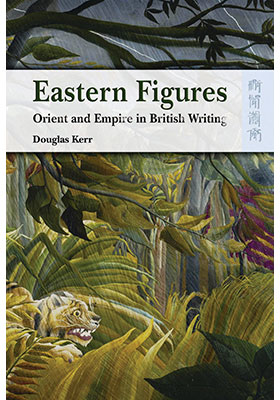Eastern Figures
Orient and Empire in British Writing
(東方作家:東方和英國帝國寫作)
ISBN : 978-962-209-935-7
June 2008
264 pages, 6″ x 9″
Ebooks
Also Available on
Eastern Figures is a literary history with a difference. It examines British writing about the East—centred on India but radiating as far as Egypt and the Pacific—in the colonial and postcolonial period. It takes as its subject “the East” that was real to the British imagination, largely the creation of writers who described and told stories about it, descriptions and stories coloured by the experience of empire and its aftermath.
It is bold in its scope, with a centre of gravity in the work of writers like Stevenson, Kipling, Conrad, and Orwell, but also covering less well-known literary authors, and including Anglo-Indian romance writing, the reports and memoirs of administrators, and travel writing from Auden and Isherwood in China to Redmond O’Hanlon in Borneo. Eastern Figures produces a history of this writing by looking at a series of “figures” or tropes of representation through which successive writers sought to represent the East and the British experience of it—tropes such as exploring the hinterland, going native, and the figure of rule itself.
Eastern Figures is accessible to anyone interested in the literary and cultural history of empire and its aftermath. It will be of especial interest to students and scholars of colonial and postcolonial writing, as it raises issues of identity and representation, power and knowledge, and centrally the question of how to represent other people. It has original ideas and approaches to offer specialists in literary history of the nineteenth and twentieth centuries, cultural historians, and researchers in colonial discourse analysis, postcolonial studies, and Asian area studies and history. It is also aimed at students in courses in literature and empire, culture and imperialism, and cross-cultural studies.
“This fine study represents a rich distillation of Douglas Kerr’s career-long study of the modalities of the East—the crowd, the implacable face, the contact zone. Readings of Kipling, Forster and Orwell, but also of less familiar writers such as Auden, Maud Diver, and Alfred Russel Wallace carefully interrogate settled ideas of the Orient as predictable and unfissured, and maintain a sustained literary focus throughout.” —Elleke Boehmer, Professor of World Literature in English, Oxford University
“Douglas Kerr’s thoughtful and thought-provoking engagement with British writing about Eastern peoples and places is a valuable addition to the critical literature that has responded to the challenge of Said’s Orientalism. Through exemplary attentive close readings of writers from Kipling to Redmond O’Hanlon, while drawing on the resources of deeper historical reading, Kerr displays some of the governing tropes of the British imperial imagination. Eastern Figures avoids the programmatic and formulaic: it provides, instead, a continuously inventive re-visioning of the British encounter with ‘the East’.” —Robert Hampson, Professor of Modern Literature, Royal Holloway College, University of London
“In the aftermath of the era of European empires, readers can re-learn from Kerr why we might read the authors he invokes without the sense that their books have dated, or that the encounters they were troubled and excited by are any less compelling or relevant today.” —Rajeev S. Patke, Associate Professor of English Literature, National University of Singapore




